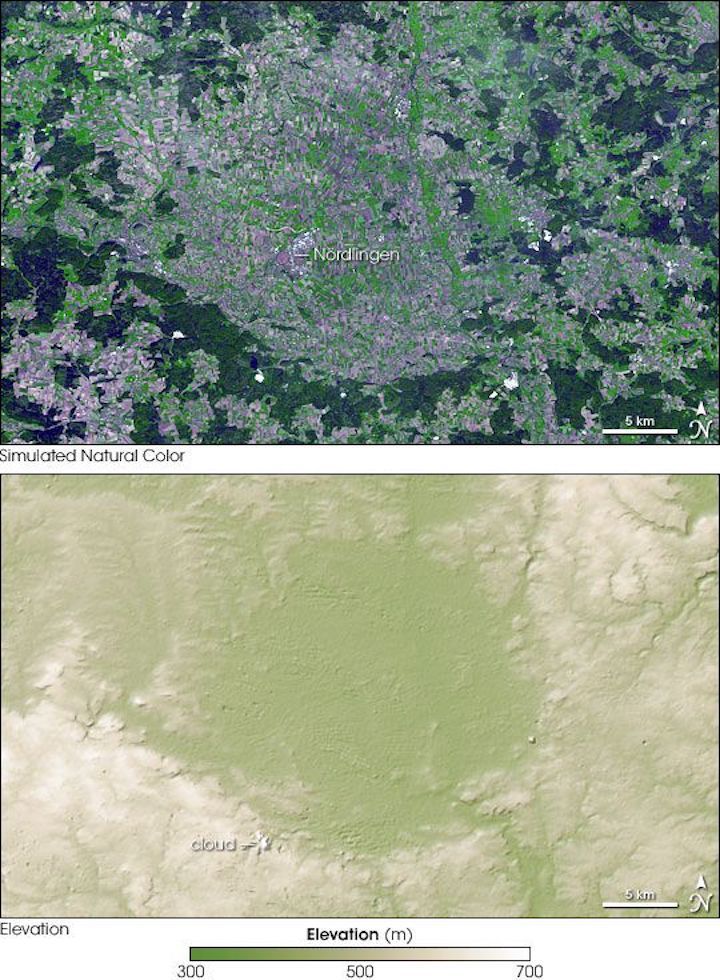27.02.2020

Meteorite samples from an ancient impact site in Germany may offer new clues about the history of oceans and life on Mars.
Ries Crater, or Nördlinger Ries, is located in western Bavaria, Germany, and formed roughly 15 million years ago, when a meteorite struck. This site has incredibly well-preserved rocks and minerals that bear similarities to the Martian surface. Therefore, samples from this impact site on Earth may shed light on Mars' past, according to a new study.
"The question that drives our interests isn't whether there's life on present-day Mars," Tim Lyons, a professor of biogeochemistry at the University of California, Riverside and co-author of the new study, said in a statement describing the new research. "We are driven instead by asking whether there was life on Mars billions of years ago, which seems significantly more likely."

Today, Mars is too cold to host liquid water on its surface, which is a requirement for life as we know it on Earth. However, 4 billion years ago, Mars may have been warm enough for surface oceans and, possibly, life, according to the study.
"To have made the planet warm enough for liquid surface water, its atmosphere would likely have needed an immense amount of greenhouse gas, carbon dioxide specifically," Chris Tino, a graduate student in biogeochemistry at UC Riverside and co-first author of the paper, said in the statement.
The researchers studied rock samples from Ries Crater, which was once a body of water. Their findings show that the samples have a high pH based on the ratio of nitrogen isotopes, as well as a high alkalinity, which indicates an imbalanced pH level, according to the study.
NASA's Mars 2020 rover is planned to land in a similar, well-preserved ancient crater that is believed to have also contained liquid water in its past. The findings suggest that the Martian crater will have a chemical composition comparable to that of Ries Crater. Therefore, studying the alkalinity, pH and nitrogen content of samples from the Ries Crater could help the researchers better understand the properties of ancient water on Mars and, in turn, determine the amount of carbon dioxide that was in the planet's atmosphere billions of years ago.
Although it's unlikely that Mars had enough oxygen to support complex life, such as humans or animals, simpler microorganisms could have survived if water on Mars had a neutral pH level and was highly alkaline, the researchers said in the statement. These conditions would indicate that the atmosphere had enough carbon dioxide to warm the planet and make liquid water possible, the scientists added.
"Before this study, it wasn't clear that something as straightforward as nitrogen isotopes could be used to estimate the pH of ancient waters on Mars," Tino said in the statement. "pH is a key parameter in calculating the carbon dioxide in the atmosphere."
Therefore, samples collected during NASA's Mars 2020 mission could be studied for nitrogen isotope ratios and be used to confirm whether the Red Planet had carbon dioxide in its ancient atmosphere.
"It could be 10-20 years before samples are brought back to Earth," Lyons said in the statement. "But I am delighted to know that we have perhaps helped to define one of the first questions to ask once these samples are distributed to labs in the U.S. and throughout the world."
Quelle: SC
